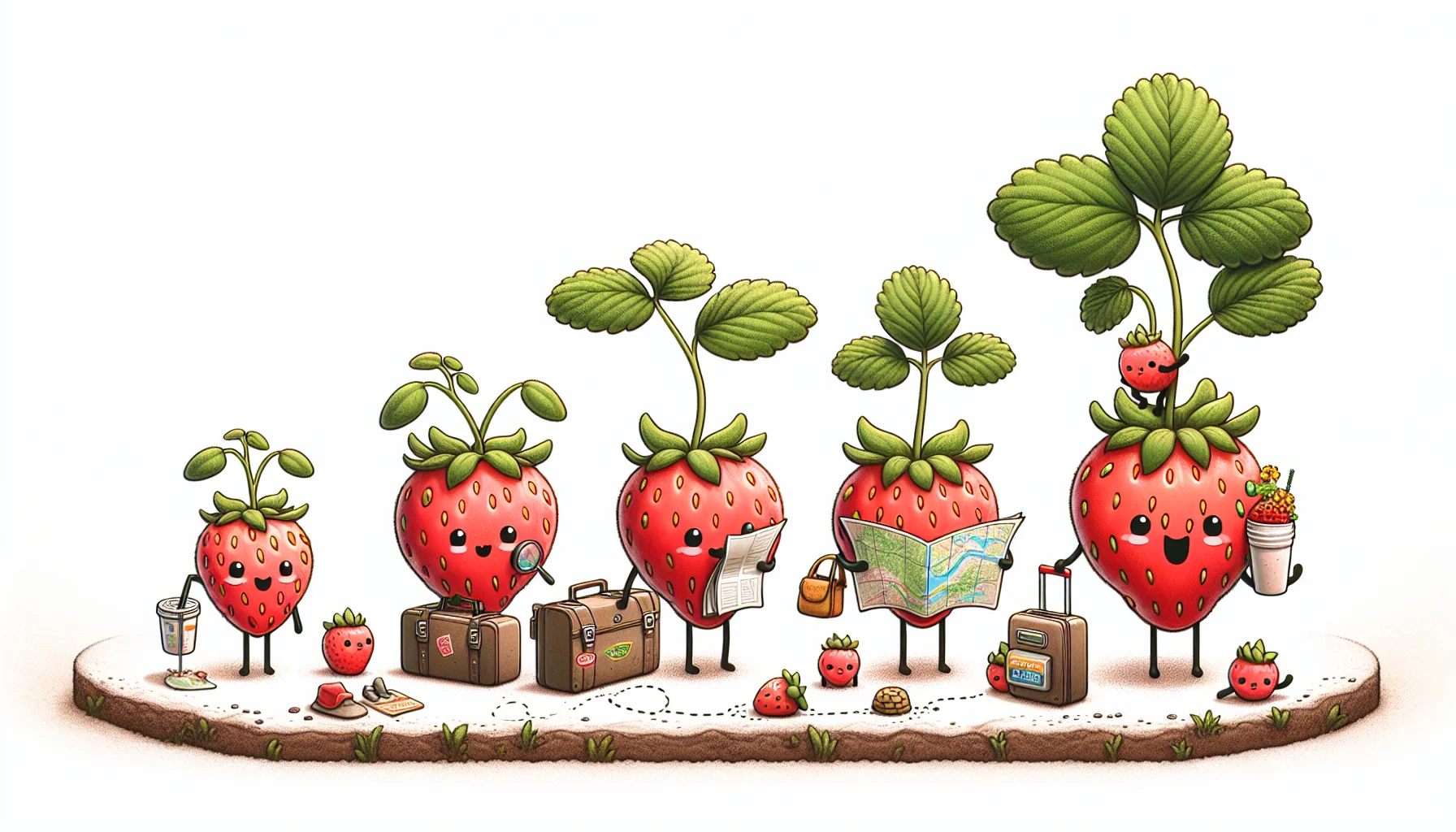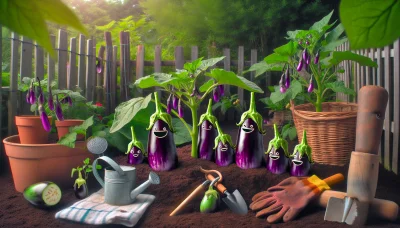Strawberries from seed Quiz
Test Your Knowledge
Question of
Growing Strawberries from Seed: A Comprehensive Guide
Growing strawberries from seed can be a truly rewarding endeavor for any gardening enthusiast. It requires patience, as strawberries are slow to germinate and require a period of stratification to mimic winter conditions. However, the care and attention invested in this process can yield an abundant harvest of sweet, home-grown strawberries. This guide aims to provide you with the knowledge and techniques needed to successfully grow strawberries from seed, ensuring a bountiful and delicious crop.
Benefits of Growing Strawberries from Seed
Growing strawberries from seed offers several advantages that make it a rewarding endeavor for gardeners. One of the primary benefits is cost-effectiveness. Seeds are generally less expensive than buying pre-grown strawberry plants, allowing gardeners to cultivate a larger quantity of plants for the same amount of money. Additionally, starting strawberries from seed opens up a wider variety of choices. Many rare or unique strawberry varieties are only available in seed form, giving gardeners the opportunity to grow unusual types that are not commonly found in stores. Beyond the practical benefits, there is also the deep satisfaction that comes from nurturing plants from the very beginning. Watching a tiny seed grow into a flourishing strawberry plant is a rewarding experience that enhances the joy of gardening.
Choosing the Right Strawberry Seeds
- Research the different varieties of strawberries to understand which thrive in your local climate. Consider factors such as temperature tolerance and disease resistance.
- Evaluate the space available in your garden for growing strawberries. Some varieties require more space than others, so choose seeds that will fit well in the area you have.
- Think about the type of strawberries you enjoy eating. Whether you prefer sweet, tart, large, or small berries, there is a variety that will match your taste preferences.
- Consider the growing season of the strawberry varieties. Some produce fruit early in the season, while others may produce fruit continuously or late in the season.
- Look for reputable seed suppliers or nurseries that offer high-quality seeds with good germination rates. This ensures that your planting efforts are successful.
- Read reviews or ask for recommendations from other gardeners who have experience growing strawberries in your area. Their insights can guide you towards the best varieties for your specific conditions.
- Finally, select seeds that are organic and non-GMO if you prefer to grow your strawberries without the use of chemical pesticides or genetically modified organisms.
Step-by-Step Guide to Planting Strawberry Seeds
- Choose the Right Time: Plant your strawberry seeds indoors, 8-10 weeks before the last frost date.
- Prepare the Soil: Use a light, well-draining soil mix. Make sure it's slightly acidic, with a pH between 5.5 and 6.8.
- Select Containers: Small pots or seed trays work well. Ensure they have good drainage holes.
- Plant the Seeds: Sow the strawberry seeds on the surface of the soil, lightly pressing them into the soil without covering them, as they need light to germinate.
- Maintain Moisture: Keep the soil moist but not waterlogged. Using a spray bottle to mist the soil can prevent overwatering.
- Provide Light: Place the containers in a bright location but out of direct sunlight. Consider using grow lights for consistent light exposure.
- Keep Warm: Strawberry seeds germinate best at temperatures between 60°F and 75°F (15°C to 24°C). Use a heat mat if necessary.
- Transplant Seedlings: Once the seedlings have grown their third leaf, transplant them into individual pots.
- Harden Off Seedlings: Gradually acclimate the seedlings to outdoor conditions over a week before planting them outside.
- Plant Outside: After the last frost, plant the seedlings in your garden. Space them about 12 inches apart in rows that are 2-3 feet apart.
- Water Regularly: Keep the soil consistently moist, especially during the first few weeks after transplanting outdoors.
- Mulch and Fertilize: Apply a layer of straw mulch around the plants to retain moisture and suppress weeds. Use a balanced fertilizer as needed.
Caring for Your Strawberry Seedlings
Strawberry seedlings require careful attention to thrive and eventually bear fruit. It's essential to provide them with adequate watering, ensuring the soil remains moist but not waterlogged, as strawberries are particularly sensitive to overwatering. In terms of sunlight, these seedlings crave plenty of light, so aim to position them in a spot where they can enjoy at least six to eight hours of direct sunlight daily. Protection from pests is another critical aspect of care. Regularly inspect your plants for signs of insects or disease and consider using natural deterrents or barriers to keep pests at bay. With the right balance of water, sunlight, and protection, your strawberry seedlings can grow into healthy, fruit-bearing plants.
Transplanting and Ongoing Care
Transplanting strawberry plants into the garden or larger containers is a critical step in ensuring a bountiful harvest. The process should ideally be done in the cooler parts of the day, either early morning or late afternoon, to prevent stress on the plants. Make sure to prepare the soil by incorporating organic matter and ensuring it is loose and well-draining. When transplanting, handle the roots gently and plant the strawberries at the same depth they were growing in their previous container, making sure the crown is just above the soil surface. Water the plants thoroughly after transplanting.
For ongoing care, strawberries require regular watering, especially during dry spells, to maintain moist but not waterlogged soil. Mulching around the plants with straw or pine needles can help retain soil moisture, suppress weeds, and keep the fruit clean. Fertilize the plants with a balanced fertilizer according to the product's instructions to promote healthy growth. Regularly check for and remove any diseased plants or pests to keep the crop healthy. With proper care and attention, your strawberry plants can produce a plentiful and delicious harvest.
Common Challenges and Solutions
| Problem | Solution |
|---|---|
| Pests (e.g., slugs, birds) | Use physical barriers like copper tape for slugs and netting for birds. Introduce natural predators. |
| Diseases (e.g., powdery mildew, root rot) | Ensure proper air circulation; avoid overhead watering. Use fungicides if necessary, following safety guidelines. |
| Environmental Stresses (e.g., too much sun, not enough water) | Provide shade during the hottest part of the day. Mulch to retain soil moisture and water regularly. |
| Soil Nutrition Imbalance | Test soil and amend with organic matter or specific nutrients as needed. Use a balanced, slow-release fertilizer. |
| Germination Issues | Use fresh seeds and ensure the correct temperature and moisture levels. Consider a germination mat if necessary. |












